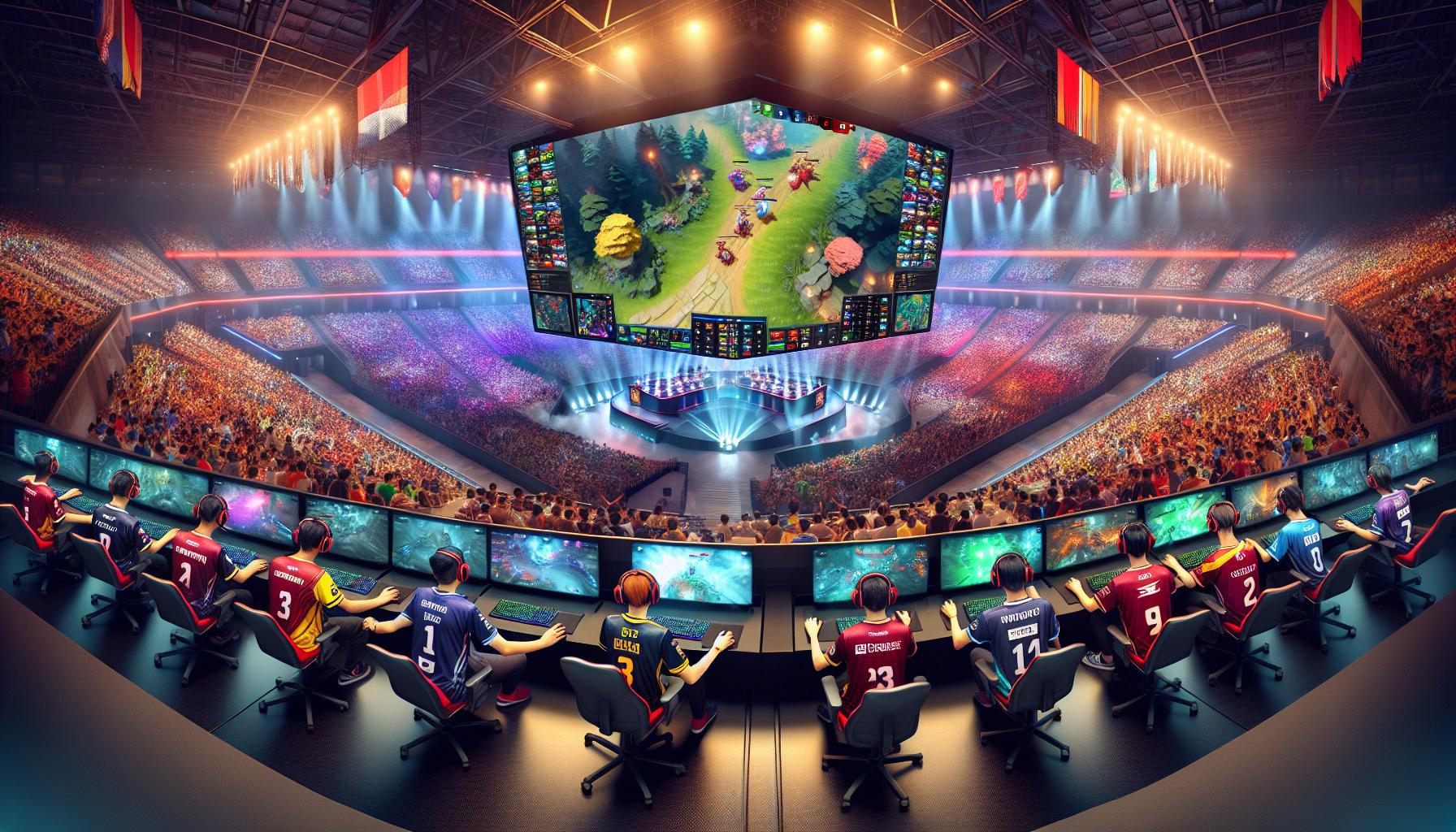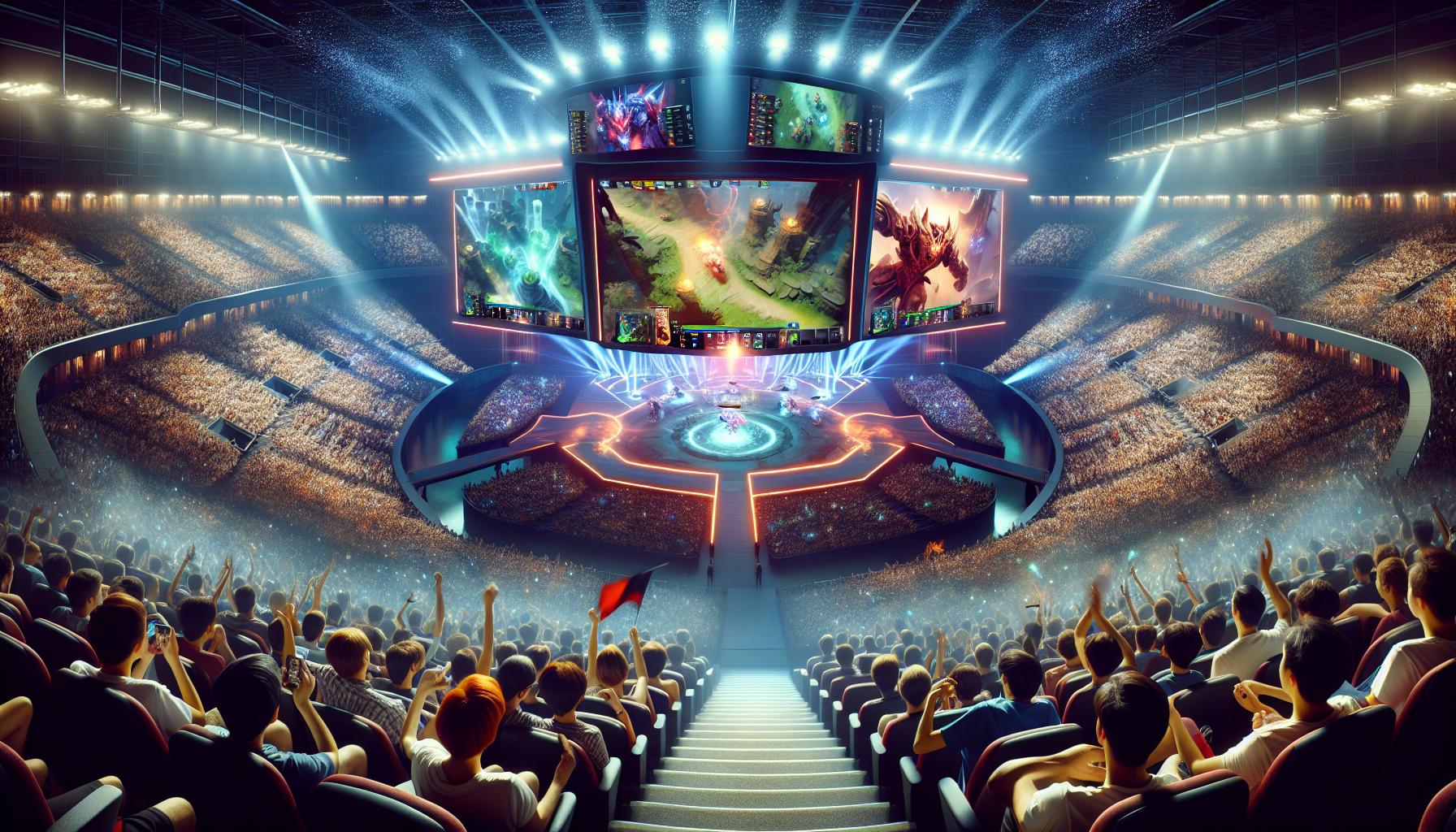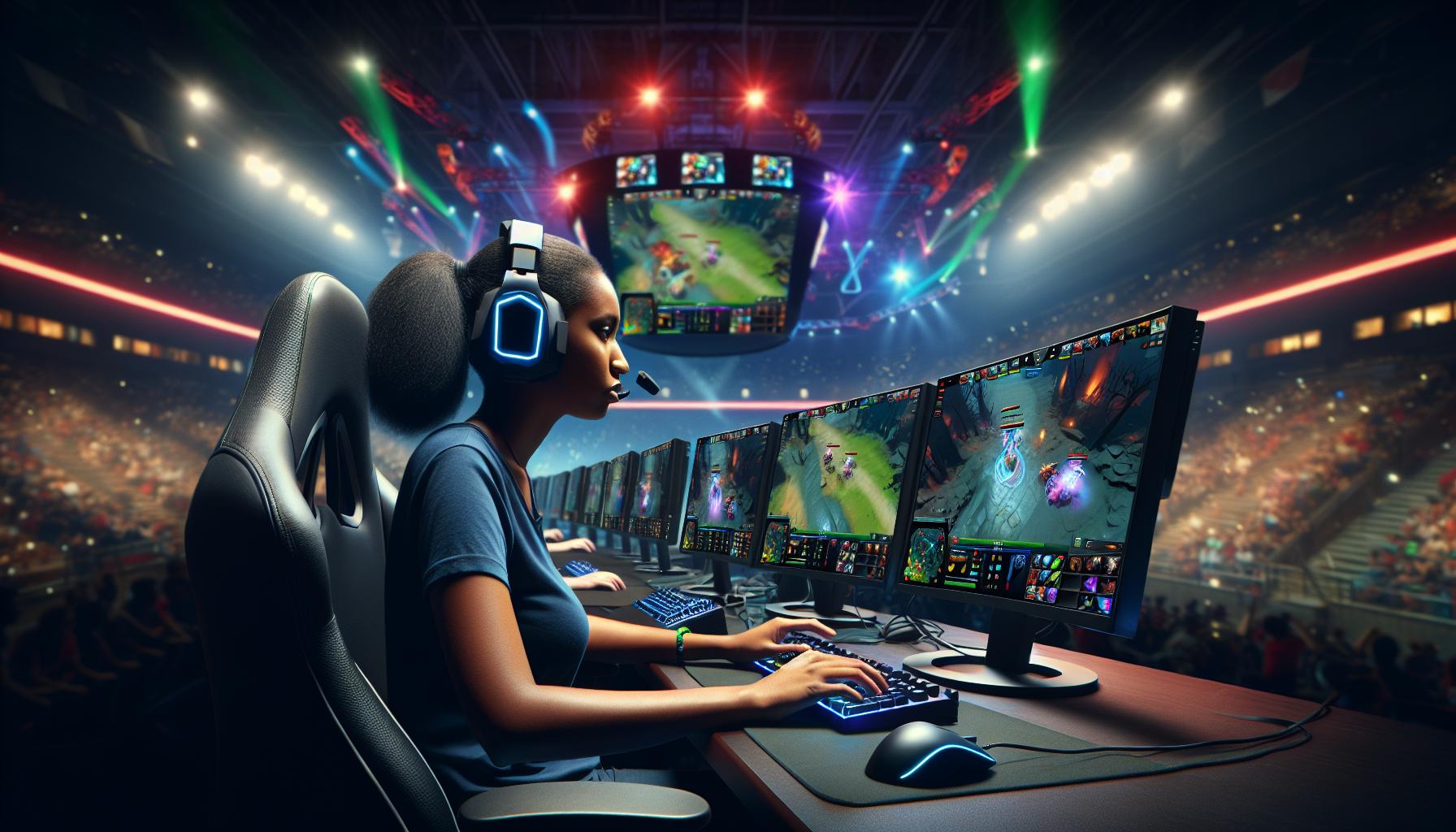The Best Fluffy Pancakes recipe you will fall in love with. Full of tips and tricks to help you make the best pancakes.

Understanding Dota 2 Majors: Key Tournaments Shaping Competitive Esports
Dota 2 majors are the pinnacle of competitive gaming, showcasing the best teams from around the globe. These tournaments not only bring thrilling gameplay but also highlight the strategic depth and teamwork that make Dota 2 so captivating. As a fan, I can’t help but be drawn in by the electrifying atmosphere and the high stakes involved.
Each major serves as a crucial stepping stone toward The International, the ultimate championship event. Teams battle fiercely for prestige and prize money, making every match a spectacle. Whether you’re a seasoned player or a curious newcomer, understanding the significance of these majors can deepen your appreciation for the game and its vibrant community. Join me as I explore what makes Dota 2 majors a must-watch for any esports enthusiast.
Key Takeaways
- Pinnacle of Competition: Dota 2 majors represent the highest level of competitive gaming, attracting elite teams and showcasing strategic depth and teamwork.
- Stepping Stones to The International: Each major is crucial for teams aiming to qualify for The International, impacting their opportunities for prestige and significant prize money.
- Dynamic Tournament Structure: Dota 2 majors include multiple phases—qualifiers, group stages, and playoffs—enhancing viewer engagement and competitive intensity.
- Significant Prize Pools: With prize pools often exceeding $1 million, Dota 2 majors create high-stakes environments that captivate audiences and motivate teams.
- Evolving Landscape: The history and structure of Dota 2 majors have evolved, including open qualifiers and improved broadcast innovations, enriching the esports community.
- Emerging and Established Teams: The majors showcase a blend of established powerhouses and rising stars, making it essential to watch team dynamics and strategies that unfold in these tournaments.
Overview Of Dota 2 Majors
Dota 2 majors are pivotal events in the professional esports circuit. These tournaments gather elite teams from various regions, showcasing high-level competition and strategic gameplay. Each major features multiple phases, including qualifiers and playoffs, contributing to a dynamic viewership experience.
Majors attract significant attention due to their large prize pools, often exceeding $1 million. Teams earn qualification points through their performances, impacting their chances to enter The International, which is the pinnacle of Dota 2 competition.
I track the major tournament schedule closely. The structure generally includes:
- Qualifying Rounds: Teams compete in regional qualifiers to secure a spot.
- Group Stage: Qualified teams are divided into groups, battling for placement in the playoffs.
- Playoffs: A single-elimination format determines the champion, culminating in a grand final.
These tournaments foster community engagement and provide fans with thrilling content. Each major contributes unique narratives, rivalries, and showcases emerging talent in the esports scene.
History Of Dota 2 Majors

Dota 2 majors hold a significant place in the game’s competitive history, evolving since their inception to become critical events for teams and fans alike. Understanding the timeline and structural changes offers insight into their impact on the esports landscape.
Major Events Timeline
- 2016: The introduction of the Major system began with the Frankfurt Major, setting a precedent in the esports community. This event featured a prize pool of $3 million, drawing massive global attention.
- 2017: The season witnessed three major tournaments – the Manila Major, the Boston Major, and the Kiev Major – further solidifying the format. The Boston Major introduced a new online qualifying phase for teams across different regions.
- 2018: The major circuit expanded with the addition of the ESL One Hamburg, showcasing the international landscape’s growth. The Kuala Lumpur Major followed, becoming the first major of the 2018-2019 season.
- 2019: The MDL Disneyland Paris Major and ESL One Birmingham Major emerged, highlighting varied locations and unique event experiences.
- 2021: The Dota Pro Circuit (DPC) was introduced, redefining the qualification process for The International and establishing a structured tier system across all regions.
- 2023: Recent majors include the Berlin Major and the Bali Major, continuing to draw top teams and maintain a prize pool standard above $1 million, attracting continuous engagement from both players and spectators.
Evolution Of Tournament Structure
The tournament structure of Dota 2 majors evolved over time, adapting to the competitive demands and audience expectations.
- Qualifying Phases: Initially, majors featured direct invitations, but the introduction of open qualifiers allowed a broader range of teams to participate, increasing competitiveness.
- Group Stages: Group formats transitioned from simpler round-robin formats to more complex group stages with varying point systems, allowing teams to demonstrate skill consistently and captivating audiences.
- Playoffs: The playoff format evolved to include double elimination brackets, heightening viewer excitement with the potential for upsets. Resets in match advantages showcased intense rivalries among teams.
- Broadcast Innovations: Streaming and analysis improved, with platforms like Twitch enabling record viewership numbers. Enhanced production quality provided deeper engagement with the community.
- Regional Representation: The inclusion of diverse regions expanded the global audience and fostered local fandoms, enriching the competitive narrative and the development of talent in emerging esports scenes.
Each of these changes has significantly altered how the Dota 2 community engages with majors, enhancing the overall competitive experience.
Notable Dota 2 Majors

Dota 2 majors feature memorable moments that define the esports landscape. Key matches reveal the intensity and skill of top-performing teams.
Key Matches And Highlights
Major tournaments often showcase legendary battles and turning points. Notable examples include:
- Frankfurt Major (2015): OG’s surprising comeback against Team Secret solidified their status as a top contender.
- Boston Major (2016): Wing’s Gaming’s tactical maneuvers led to an unforgettable five-game series against Digital Chaos, showcasing stunning teamwork.
- The International 2018: The dominating performance of OG against PSG.LGD earned accolades for its high-stakes intensity and strategic depth.
- Berlin Major (2020): Evil Geniuses’ upset against Team Secret highlighted resilience and adaptability in high-pressure situations.
These matches not only electrify fans but also illustrate the evolving strategies teams employ during crucial moments.
Impact On The Competitive Scene
Dota 2 majors significantly influence team rankings and reputation. Their effects include:
- Qualification: Teams earn crucial points for The International, impacting their chances of success at the ultimate championship.
- Rivalries: High-stakes encounters foster intense rivalries, increasing viewer interest and engagement.
- Emerging Talent: Majors provide a platform for up-and-coming players to showcase their skills, leading to potential roster changes and new team dynamics.
- Sponsorship Opportunities: Performance in majors attracts sponsors, enhancing financial support for teams and organizations.
The cumulative effects of Dota 2 majors reinforce their importance in the competitive landscape, shaping the future of the game.
Teams To Watch In Dota 2 Majors

Dota 2 majors showcase a mix of established teams and emerging talent. Monitoring these teams offers insights into gameplay trends and potential outcomes.
Rising Stars
- Entity: Entity shows remarkable growth with impressive performances in qualifiers. Their innovative strategies and teamwork have captured attention.
- Team Secret: Team Secret’s revamped roster displays outstanding synergy, pushing boundaries with their aggressive playstyle. Their recent rise indicates strong potential in upcoming majors.
- Gaimin Gladiators: Gaimin Gladiators emerges as formidable challengers. Their ability to adapt during crucial matches sets them apart from other rising teams.
- OG: OG stands out with a history of exceptional performances, having won The International multiple times. Their experienced roster consistently delivers under pressure.
- Team Liquid: Team Liquid’s strategic mastery in drafting and execution keeps them competitive. Their past major victories reinforce their status as a leading contender.
- Evil Geniuses: With a legacy of dominance, Evil Geniuses continues to impress with their strong performances. Their resilience in high-stakes scenarios remains unmatched.
These teams are integral to the Dota 2 majors, as they shape the dynamics of the tournament landscape with their unique styles and tactical approaches.
Conclusion
Dota 2 majors are more than just tournaments; they’re a celebration of strategy skill and community. Watching these events unfold is an exhilarating experience that brings fans together and showcases the best in esports.
As I look forward to future majors I can’t help but feel excited about the emerging talent and fierce rivalries that will shape the competitive landscape. Each major not only impacts team rankings but also sets the stage for unforgettable moments in Dota 2 history.
For anyone invested in the world of esports these tournaments are a must-watch. They’re pivotal in the journey to The International and a testament to the passion and dedication of players and fans alike.
